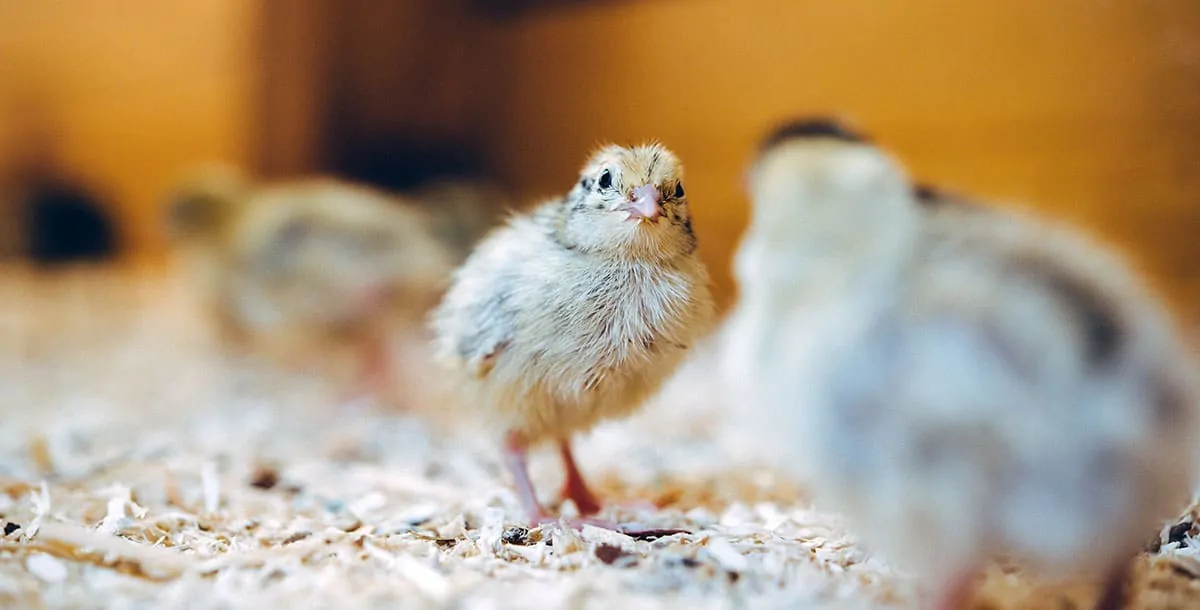Known for its hardy and tiny stature, quails can make interesting pets to many modern families. In fact, many first-time quail owners may find the most interesting process of owning a quail to be the time when they begin to lay eggs. Unfortunately, most quails never get broody, making it difficult for the quail eggs to hatch on their own.
Therefore breeders find that they have the responsibility to incubate the quail eggs. While the usual way to hatch quail eggs is by putting them in an incubator, how would you do it if you don’t have access to one?
One of the easiest ways is to slip the quail egg under a broody hen to hatch it accordingly. You could also opt to make a make-shift incubator with simple household items like a box, lamps, hand warmers, or heating pads. Hatching an egg with a make-shift incubator may take time but is a method that is most likely to be successful.
Read on, if you want to know how to hatch your own or store-bought quail eggs.
Table of Contents
3 Yays to Hatch Quail Eggs Without an Incubator
For anyone who isn’t keen on hatching quail eggs often, purchasing an incubator may seem like a steep investment for perhaps one-time use. Instead, here are some different ways you can try in place of a conventional incubator to hatch the quail eggs.
Slip the Eggs Beneath a Brooding Hen
If you have a brooding hen, you can easily slip the quail eggs under it so they can incubate naturally. To encourage the hen to brood, you could try placing several fake eggs along with the real quail eggs.
Be sure to prepare a comfortable box for your hen to brood in without being overly cramped, or they may leave before the process is over.
How to Create a Makeshift Incubator
Creating your own incubator may be a good idea if you don’t have access to a professional incubator or brooding hens. To do this, you will first need:
- a large box
- a lamp
- a thermometer
- a misting bottle
- some cloth towels or newspapers.
Follow through with the steps below:
Step 1: Poke holes through the box, ensuring proper ventilation within the box. You will also have to ensure the lamp you have can deeply reach into the box.
Step 2: Lay down some newspapers or cloth towels to the bottom of the box. Continue by placing your lamp in the box, preferably using a lamp that has a bendable neck.
Step 3: Place your quail eggs on the cloth towels or newspaper, allowing enough space between each egg. Bring the lamp closer to the surface of the quail eggs, maintaining the shell’s surface temperature to 100°F.
You should use a thermometer for an accurate reading and be sure to check the temperature daily.
Step 4: Using a misting bottle, spray some water onto the surface of the quail eggs. You should retain 45% to 55% of humidity in the box for the first two weeks and 50% to 65% of humidity in the last days. Do not overspray or wet the cloth towels more than necessary.
Step 5: Rotate the eggs up to 3 times daily. You may stop rotating the eggs on the final day before the expected hatching day.
Despite needing a lot more patience and effort, hatching your quail eggs in a makeshift incubator is the safest as you can control the environment as you require. Quail eggs regularly take between 16 to 25 days to hatch, depending on the breed of the quail eggs you have.
Using hand warmers or heating pads
In case you don’t have a lamp or direct access to electricity, using hand warmers or heating pads as a substitute can also help hatch the quail eggs. Here’s how you can adopt this method in hatching quail eggs:
Step 1: Activate the hand warmers you have and place it in a box. You will need several hand warmers to last you through the days. If you’re using a heating pad, you will have to pull down the temperature to its lowest setting.
Step 2: Place the quail egg on a hand warmer and cover the top of the quail egg with another pack of hand warmers.
Step 3: Spray some water on the eggs to retain its humidity and close the box’s lid. Rotate the quail eggs 3 times a day and replace the hand warmers after 10 to 12 hours.
While this method is much simpler, you’ll be on track to creating multiple wastes as you must cycle through numerous hand warmers during the hatching process. Subsequently, it may also be difficult to control the temperature of the hand warmers, which can compromise the result of your hatching process.
Can I Hatch Store-bought Quail Eggs?
What if you don’t have your own fertile quail eggs to hatch? Albeit less likely to succeed, many have found that store-bought quail eggs can also be hatched
Quail eggs should typically be left out at room temperature if you wish to hatch them, so if you have already placed the quail eggs in the fridge, it’s likely that the quail eggs will no longer hatch.
Once you’ve ensured that the quail eggs have never been refrigerated, you can then check to see if they have been fertilized before being sold. This is a process known as candling and can save you time and effort from hatching an unfertilized egg.
How to Candle Your Store-bought Quail Eggs
If you’re looking to hatch store-bought eggs, you should first check if the egg has been fertilized beforehand. To do this, you’ll have to bring an egg up toward a light source and check if you can see through the shell. Most fertilized eggs will appear cloudy, which is a sign that you can try hatching it following the instructions above.
On some occasions, you may also see spider-like veins coming out a dark spot from the middle of the egg. This also indicates that the quail egg you have is fertilized, and you may attempt to hatch it accordingly. Unfertilized eggs normally only show a yolk in the middle of the egg with no protruding veins coming off it.
However, you should continue to perform the candling process throughout the hatching period to ensure the embryo has not died midway. Ideally, this should be done on the 4th and 10th day of your hatching process.
Please note that far from all store-bought quail eggs will hatch successfully, but it doesn’t mean you should give up right off the bat.
Conclusion
In conclusion, hatching quail eggs if you don’t have an incubator is fra form impossible. While this is a process that will require patience, time, and careful care, the result of a successfully hatched quail egg is indeed a satisfying feeling in the end.
If you wish to save time, it’s always best to check if the eggs that you have are fertilized, or you may be met with disappointment after 18 days.
Remember that it may take several tries to get the conditions right if you wish to try hatching the quail eggs, so if it first doesn’t happen for you, the key is to try and try again with a fresher batch.


